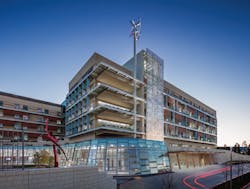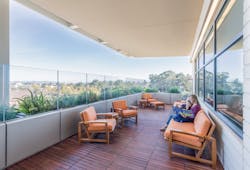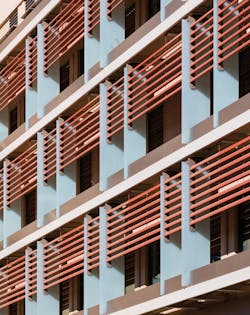Green Standards for Healthcare: How to Certify Smarter
Why Certify?
Third-party verification of your sustainable claims speaks to your green building’s authenticity, said Robin Guenther, LEED Fellow, senior advisor to Health Care Without Harm, co-author of Sustainable Healthcare Architecture and a principal for Perkins&Will. Without it, there’s no proof that your building is designed or operated according to the standards set by the certifying body you’ve chosen.
“In this world of transparency that we live in, there’s a real risk to hospital owners who say they designed and constructed sustainably without some third-party certification that verifies that,” Guenther explained. Third-party verification also allows health systems with many buildings to make sure their own standards are carried through on every project; in these cases, green building certification doubles as a quality control or quality assurance mechanism on real estate, Guenther said.
There are many certification options out there, but three key programs are making the most inroads in healthcare. LEED BD+C: Healthcare (formerly LEED for Healthcare) is arguably the most popular, Guenther said, followed by the WELL Building Standard and Fitwel. LEED BD+C: Healthcare is designed for hospitals that operate 24 hours a day, seven days a week and provide inpatient medical treatment, making it the only healthcare-specific rating system, Guenther said. WELL and Fitwel are focused on occupant health and wellbeing, making them a natural fit for facilities whose express purpose is healing.
Certification Challenges
Different healthcare buildings run into different pitfalls when it’s time to decide whether to certify. Hospitals are massive consumers of resources in terms of energy and water use due to their 24/7 operation, massive ventilation requirements and need for redundancy, which all combine to make energy and water efficiency difficult (though not impossible) to achieve.
Hospitals have also found that their need for ultra-reliable power has somewhat outpaced the ability of local utilities to guarantee reliability, Guenther added. “Hospitals have increasingly become power generators because they need reliability more than their utilities can provide,” she said. “Most of the time, they’re generating power in partnership with local utilities—selling power to the grid when they don’t need all the power they generate and then disconnecting from the grid in peak periods. That’s another real uniqueness that drives their approach to this.”
Healthcare facilities can also fall victim to several other common issues when attempting to certify green, including:
- Access to daylight and views. Sustainable building has embraced the importance of natural light and views of nature, but this is a complex issue for larger healthcare facilities, which tend to be deeper and thus less able to bring daylight and views into all parts of the facility.
- Operations. O&M is another place to practice authenticity. As one hospital CEO said to Guenther, “I can’t build a green building if I still have Styrofoam cups in my cafeteria.” Waste reduction and pollution prevention are key to sustainable certification.
- Choosing to certify too late. If green certification isn’t a goal early on, projects end up having to incorporate features that don’t necessarily improve the building—such as bike racks in locales where people aren’t biking to the facility—just to gain points in the process. A more thoughtful approach that embraces certification early in the process is more likely to succeed.
Set Yourself Up for Success
The first key to success is to align your certification strategies and expectations with your organization’s sustainability goals, Guenther explained. That will ensure that whatever green strategies you incorporate in your building are actually delivering value to your organization.
Second, examine your certification options and see how they work with each other. LEED combines naturally with WELL and Fitwel. “If owners are opting for WELL or Fitwel, we tend to counsel them to also do LEED,” Guenther said. “Because of the authenticity that healthcare needs to demonstrate, they have to both be concerned about their broader impacts and what’s going up the smokestack from their central utility plant, as well as whether the indoor air is optimized for occupant comfort.”
Next, examine how the systems and materials you’re specifying can make a (sometimes dramatic) difference in how your building operates. Investing slightly more capital dollars in your mechanical systems, for example, could use much less energy going forward than the systems with a lower upfront cost. Healthcare facilities can also do better when specifying things like flooring, furniture and finishes, Guenther said. “That’s an area where healthcare has a lot to say, because they’re on the front line of the science that’s linking toxic materials to human health issues,” she explained. “That’s another place where they can really be a bellwether in the market for a move to safer processes.”
“Understand your tolerance for innovation and risk in design,” Guenther added. “To really be an innovator or an early adopter of high-performing sustainable systems means that you’re going to be doing things people haven’t done before.”
About the Author
Janelle Penny
Editor-in-Chief at BUILDINGS
Janelle Penny has been with BUILDINGS since 2010. She is a two-time FOLIO: Eddie award winner who aims to deliver practical, actionable content for building owners and facilities professionals.



